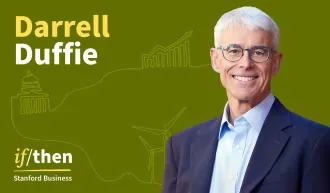Can Polling Location Influence How Voters Vote?
A study says the location of where voting takes place "would be more than enough to change the outcome of a close election."
June 01, 2008
What would you say influenced your voting decisions in the most recent local or national election? Political preferences? A candidate’s stance on a particular issue? The repercussions of a proposition on your economic well-being? All these “rational” factors influence voting, and peoples’ ability to vote, based on what is best for them, is a hallmark of the democratic process.
But Stanford Graduate School of Business researchers, doctoral graduates Jonah Berger and Marc Meredith, and S. Christian Wheeler, associate professor of marketing, conclude that a much more subtle and arbitrary factor may also play a role — the particular type of polling location in which you happen to vote.
It’s hard to imagine that something as innocuous as polling location (e.g., school, church, or fire station) might actually influence voting behavior, but the Stanford researchers have discovered just that. In fact, Wheeler says “the influence of polling location on voting found in our research would be more than enough to change the outcome of a close election.” And, as seen in the neck-to-neck 2000 presidential election where Al Gore ultimately lost to George W. Bush after months of vote counting in Florida, election biases such as polling location could play a significant role in the 2008 presidential election. Even at the proposition level, “Voting at a school could increase support for school spending or voting at a church could decrease support for stem cell initiatives,” says Wheeler.
Why might something like polling location influence voting behavior? “Environmental cues, such as objects or places, can activate related constructs within individuals and influence the way they behave,” says Berger. now an assistant professor of marketing at the Wharton school. “Voting in a school, for example, could activate the part of a person’s identity that cares about kids, or norms about taking care of the community. Similarly, voting in a church could activate norms of following church doctrine. Such effects may even occur outside an individual’s awareness.”
Using data from Arizona’s 2000 general election, Berger, Meredith, a visiting lecturer at MIT, and Wheeler discovered that people who voted in schools were more likely to support raising the state sales tax to fund education. The researchers focused on Proposition 301, which proposed raising the state sales tax from 5.0 percent to 5.6 percent to increase education spending. What they found was that voters were more likely to support this initiative if they voted in a school versus other types of polling locations (55.0 percent versus 53.09 percent).
This effect persisted even when the researchers controlled for — or removed the possibility of — other factors such as:
- Where voters lived — People who have kids may be pro-education and more likely to live near, and hence vote at, schools
- Political views — Those who voted for Gore or positively on other propositions; and Demographics including age, sex, etc.
In regards to the first control, for example, people were still more likely to support Proposition 301 if they had voted in schools than if they had voted in places that were not schools but had schools nearby. No matter how they cut and spliced the data, the researchers found that voters in schools were more likely to support Proposition 301.
“We want factors like political views — whether someone thinks a candidate is going to make our country a better place — to sway elections,” said Berger. “But in forming election policy, we also want to make sure that arbitrary factors such as polling location don’t ultimately influence voting behaviors.”
To further test their hypothesis, the researchers even conducted the same analysis for the other 13 propositions on the Arizona ballot. They reasoned that if voters who cast their ballots in schools were more likely to vote positively for other unrelated propositions on wildlife or property taxes, for example, then the researchers would know that their model was not adequately accounting for some other factor beyond polling location, and that something such as voting preferences was having an effect. But such additional testing only supported the researchers’ hypotheses further.
The researchers also followed up with a lab experiment that allowed for random assignment of voters to pictures of different voting environments that the researchers thought might influence voting behavior. Participants were shown 10 images from well-maintained schools (e.g. lockers, classrooms) or churches (e.g. pews, alters), plus five additional filler images of generic buildings. A control group was shown images of generic buildings.
The participants then voted on a number of initiatives including California’s 2004 stem cell funding initiative, Arizona’s education initiative, and several others. Initiative wording was taken right from each state’s legislative council documents. As predicted by Berger, Meredith, and Wheeler: Environmental cues contained in the photos influenced voting.
Results from the second study showed that participants were less likely to support the stem cell initiative if they were shown church images than if they were shown school images or a generic photo of a building. The subjects also were more likely to support the education initiative if they were shown school images versus church or generic building images. The results further demonstrated that environmental cues present in different polling locations can influence voting outcomes, even when voters are randomly assigned to different environmental cue conditions.
“What our research suggests is that it might be useful to further investigate influences such as polling location to better understand how such factors affect different types of voting situations. From a policy perspective, the hope is that a voting location assignment could be less arbitrary and more determined in order to avoid undue biases in the future,” says Wheeler.
For media inquiries, visit the Newsroom.
Explore More

The Secrets of Political Persuasion

Why Republican Politicians Pay More Than Democrats for TV Ads



